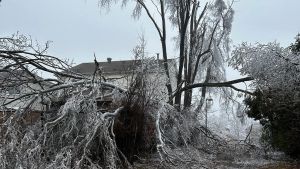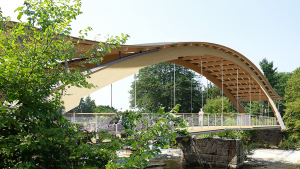The City of Windsor this year stirred controversy by rejecting as much as $40 million — and potentially up to $70 million with incentives — in federal money under Ottawa’s Housing Accelerator Fund (HAF).
But its neighbour, suburban Tecumseh, accepted $4.4 million from the fund with open arms.
Windsor bucked the trend of 179 other Canadian municipalities in accepting money from the $4 billion pot designed to “include more ambitious measures” to help solve the country’s “housing crisis,” according to Housing Minister Sean Fraser.
But for Windsor, Canada’s traditional automotive capital with a fast-accelerating population of almost 230,000, that’s the rub. City council overwhelmingly rejected the HAF offer by an 8-2 vote.
The funding comes with strings attached including that the city would have been forced to build a variety of housing including fourplexes “as of right.” That effectively means no consultation with the community and an override of zoning bylaws, similar to a recent provincial mandate of “as of right” triplexes, though Premier Doug Ford recently came out adamantly against fourplexes.
Windsor Mayor Drew Dilkens declined an interview. But city coun. Fred Francis, a strong supporter of the decision, said the city rejected the federal offer, as generous as it might seem, for several reasons.
“For me it’s about the public consultation. I believe people who live in neighbourhoods deserve to have a say in what those neighbourhoods look like, how they develop.”
The city didn’t just reject the federal offer out of hand but came up with an alternative, which Ottawa in turn rejected.
Its made-in-Windsor strategy called for a “balanced approach” to meeting HAF housing supply targets. In fact, it says it made the original application and then the feds added the requirement for fourplexes as a “ticket to entry.”
The city’s own plan doesn’t reject densification and specifically fourplexes but earmarks them on “major transit routes, in most parts of downtown, and in many other areas across the city” and “across almost 1,000 acres and nearly 50 kilometres of arterial roads.”
Under HAF it would have committed to an additional 2,100 units in addition to an “already anticipated” almost 1,800 over three years.
It had already amended its official plan to identify “intensification priority areas” of almost 450 hectares for mixed-use housing.
Asked why the city should be so adamant about fourplexes when it had to accept the provincial triplex mandate, Francis said “at what point is this just a little bit too much.”
The councillor pointed out it’s not just public consultation but what the city’s infrastructure can handle, noting several massive floods due to storms in recent years that damaged neighbourhoods and forced a $4.9 billion rebuild of part of the city’s sewer system.
“It comes down to what the neighbourhoods can handle,” he said.
He also said it’s different with the provincial triplex mandate. That’s because the city’s hands are tied because cities are “creatures of the provincial government and the province has full control of municipalities.”
Not so with the feds.
Francis also said this type of intensification was never campaigned on during the last election.
Meanwhile, neighbouring Tecumseh with a population of close to 25,000, has embraced with open arms the HAF.
It will get $4.4 million over three years to build 137 units including multistorey and fourplexes. The money will pay for “a host of things,” Mayor Gary McNamara said, from purchasing land to rebating permit and development charges and installing e-permitting technology.
Under HAF, municipalities could also receive money for design of transit routes as well as water and sewer upgrades.
McNamara said the fourplex mandate is “not really new” for his town. Despite its small size and semi-rural location, it already has enough experience with multiunit buildings of three, four and six units.
“So, there’s a demand for that type of housing in the area.”
McNamara said it’s not just density but matters like size, rental versus ownership and affordability.
But he said the town is “not necessarily all of a sudden going to put fourplexes in every nook and cranny.”
And some zoning laws will still apply such as height and side yard restrictions.
“I think the biggest misconception is that people are going to tear down houses to put fourplexes up,” he said. “Economically it just doesn’t make sense.”
Meanwhile, local architect and urbanist Dorian Moore, an outspoken critic of the City of Windsor’s stance, argues the city has a lot of past practice with fourplexes seamlessly integrated into single family home neighbourhoods. He points to 100-year-old housing where fourplexes and apartment buildings line major arteries that back on to residential streets.
“Typically, they are located on corner sites in neighbourhoods and or transitional sites between the commercial street and residential side streets,” he said. “Less often, but still seen in tradition neighbourhoods are midblock locations.”
Moore said his “preferred strategy” would be for the city to accept the HAF money and “prioritize or incentivize” those types of locations. He said this creates a “win-win for the neighbourhood and those looking for new housing options.”










Recent Comments
comments for this post are closed